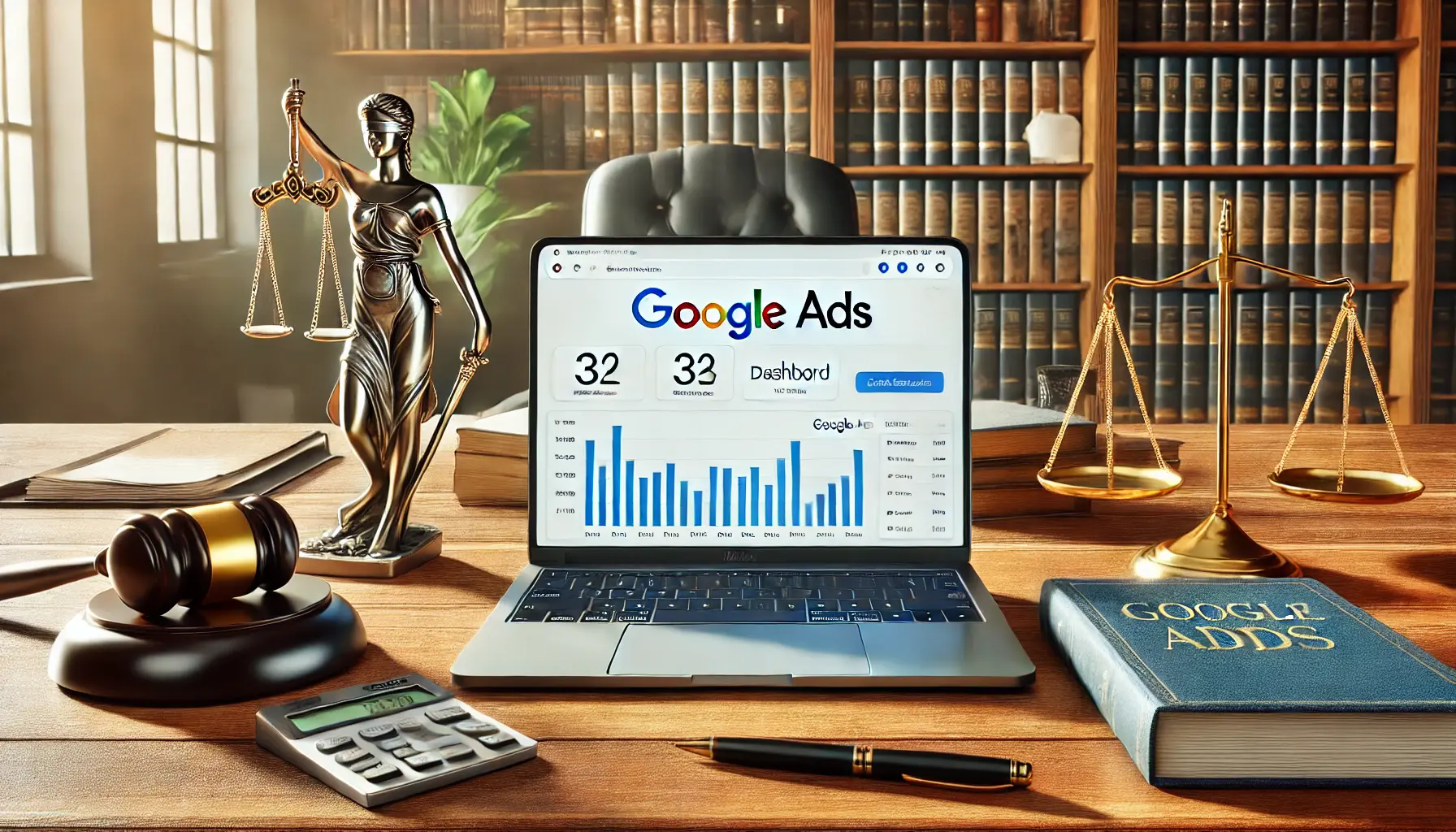The digital landscape for legal professionals is evolving rapidly, with Answer Engine Optimization (AEO) emerging as a pivotal strategy in enhancing online visibility and attracting potential clients.
Unlike traditional search engine optimization (SEO) that focuses on driving traffic to websites through keywords and links, AEO shifts the focus towards directly answering the queries of internet users.
This approach is particularly beneficial for lawyers and law firms aiming to establish their authority and expertise in specific legal areas.
As the internet becomes increasingly saturated with content, the ability to stand out and provide immediate, authoritative answers to legal inquiries can set a law firm apart from its competitors.
AEO leverages advanced algorithms and natural language processing technologies to optimize content for voice searches and question-based queries, making it an essential tool for legal professionals in the SEO for Lawyers category.
- Understanding AEO in the Legal Field
- Strategies for Implementing AEO in Legal Practices
- Enhancing Visibility with AEO-Friendly Content
- Mobile Optimization and Voice Search
- Building Authority with Quality Content
- Engaging Your Audience Through Interactive Content
- Measuring Success and Adjusting Strategies
- Maximizing Legal Expertise Through AEO
- AEO for Lawyers: Frequently Asked Questions
Understanding AEO in the Legal Field
At its core, Answer Engine Optimization for lawyers involves crafting content that directly addresses the questions and concerns of their potential clients.
This strategy requires a deep understanding of the legal issues people are searching for online, as well as the specific language and phrasing they use.
By aligning content with these queries, law firms can increase their chances of appearing in featured snippets or direct answer boxes, which are prominently displayed at the top of search engine results pages (SERPs).
Implementing AEO effectively means going beyond mere keyword insertion.
It involves structuring content in a way that search engines can easily interpret as a direct answer to user queries.
This could include the use of FAQs, step-by-step guides, or detailed explanations of legal processes.
The goal is to provide concise, yet comprehensive answers that satisfy the searcher’s intent, thereby improving the firm’s online visibility and credibility.
Key Components of AEO for Lawyers
The success of AEO for lawyers hinges on several key components.
First, understanding the client’s journey and the types of questions they might have at each stage is crucial.
This insight helps in creating targeted content that meets the user’s needs.
Secondly, the content must be structured logically, with clear headings, bullet points, and paragraphs that search engines can easily parse as answers.
Finally, staying updated with the latest in legal trends and search engine algorithms ensures that the content remains relevant and authoritative.
Another vital aspect of AEO is the emphasis on mobile optimization and voice search.
With an increasing number of legal queries coming from mobile devices and through voice-activated assistants, optimizing for these platforms is essential.
This means ensuring that content is easily accessible on small screens and that it is written in a conversational tone, which is more likely to match the natural language queries of voice search users.
Incorporating AEO into your law firm’s digital marketing strategy can significantly enhance your online presence, making it easier for potential clients to find and trust your legal expertise.
Strategies for Implementing AEO in Legal Practices
Adopting Answer Engine Optimization within a legal practice requires a strategic approach that aligns with the firm’s areas of expertise and the needs of its potential clients.
By focusing on providing clear, authoritative answers to common legal questions, law firms can improve their visibility on search engines and position themselves as thought leaders in their respective fields.
Here are some effective strategies for implementing AEO in legal practices:
Identify Common Legal Queries
The first step in AEO is to identify the most common questions that potential clients have regarding legal matters.
This involves researching and compiling a list of queries related to the firm’s practice areas.
Tools like keyword research platforms and analysis of search engine trends can provide valuable insights into the types of questions people are asking online.
Once these questions are identified, the next step is to create content that directly answers them.
This content should be straightforward, informative, and written in a way that non-lawyers can easily understand.
The goal is to provide value to the reader by offering clear, concise answers to their legal questions.
Optimize Content Structure
For AEO to be effective, the content must be structured in a way that search engines can easily recognize as an answer to specific queries.
This includes:
- Using clear and descriptive headings and subheadings that include the question being answered.
- Employing bullet points or numbered lists to break down complex legal processes into easy-to-understand steps.
- Incorporating tables or charts to summarize information or compare legal options.
This structured approach not only helps search engines identify relevant content but also makes it easier for users to find the information they need quickly.
Focus on Quality and Authority
The quality of the content is paramount in AEO.
Search engines prioritize answers that come from authoritative sources, so it’s important for law firms to establish their credibility.
This can be achieved by:
- Providing detailed explanations that cover all aspects of the question.
- Including case studies or examples to illustrate how legal principles apply in real-life scenarios.
- Citing relevant laws, regulations, or court decisions that support the answer.
By focusing on quality and authority, law firms can improve their chances of being featured in direct answer boxes or featured snippets, significantly increasing their online visibility.
Remember, the goal of AEO is not just to attract more website visitors, but to provide valuable information that establishes your firm as a reliable source of legal advice.
Enhancing Visibility with AEO-Friendly Content
Creating content that is optimized for answer engines is a critical component of AEO strategy for lawyers.
This involves not only answering common legal questions but also ensuring that the content is easily discoverable by search engines and appealing to potential clients.
Here are key practices to enhance the visibility of your legal practice through AEO-friendly content:
Utilize Natural Language and Question-Based Phrasing
With the rise of voice search and conversational queries, incorporating natural language and question-based phrasing into your content is essential.
This means framing headings and content in the form of questions that potential clients are likely to ask.
For example, instead of a heading that reads “Divorce Proceedings,” use “How Do Divorce Proceedings Work?” This approach aligns with how people naturally ask questions, making it more likely for your content to be selected as a direct answer.
Additionally, writing in a conversational tone helps mimic the way people speak, especially when using voice search.
This can significantly improve the chances of your content being featured in voice search results, further enhancing your firm’s online visibility.
Incorporate Semantic Keywords
Beyond the main keyword “AEO,” it’s important to include semantic keywords related to your topic.
Semantic keywords are variations or related terms that people might use to search for the same information.
For instance, if your main keyword is “divorce law,” semantic keywords could include “legal separation,” “annulment,” and “child custody laws.” Including these variations helps search engines understand the context of your content and improves its chances of appearing in a wider range of search queries.
Employing semantic keywords requires thorough research to identify the terms most relevant to your practice areas and the questions your potential clients are asking.
Tools like Google’s “People also ask” feature and keyword research tools can provide insights into related queries and terms.
Optimize for Featured Snippets and Direct Answers
Featured snippets and direct answers are prime real estate in search engine results pages.
To optimize your content for these positions, focus on providing clear, concise, and direct answers to questions at the beginning of your articles or blog posts.
Structuring your content with bullet points, numbered lists, or short paragraphs immediately following the question can increase your chances of being featured.
It’s also beneficial to include a summary or conclusion that directly answers the question posed at the beginning of the content.
This summary should be straightforward and provide the most important information a reader would need to know, making it an ideal candidate for a featured snippet or direct answer.
Leveraging AEO-friendly content is not just about answering questions but doing so in a way that reflects the natural, conversational manner in which people seek legal advice online. By optimizing content structure and incorporating natural language and semantic keywords, law firms can significantly enhance their online visibility and authority.
Mobile Optimization and Voice Search
In today’s digital age, optimizing for mobile devices and voice search has become indispensable for law firms aiming to leverage AEO effectively.
The increasing reliance on smartphones and voice-activated devices for internet searches means that your AEO strategy must cater to these technologies to ensure maximum visibility and engagement.
Here’s how to optimize your legal content for mobile and voice search:
Mobile Optimization for Legal Websites
Mobile optimization ensures that your website and content are easily accessible and navigable on smartphones and tablets.
This is crucial, as a significant portion of legal queries comes from mobile users.
To optimize your site for mobile, consider the following:
- Responsive Design: Your website should automatically adjust to fit the screen size of the device it’s being viewed on, providing an optimal browsing experience for all users.
- Fast Loading Times: Mobile users expect quick access to information. Ensure your website loads quickly by optimizing images, leveraging browser caching, and minimizing code.
- Easy Navigation: Simplify your site’s navigation to make it easy for mobile users to find the information they need with minimal clicks.
Implementing these practices will not only improve the user experience for mobile visitors but also contribute positively to your site’s search engine rankings.
Optimizing Content for Voice Search
With the rise of digital assistants like Siri, Alexa, and Google Assistant, voice search optimization is becoming increasingly important.
Here’s how to ensure your content is voice search-friendly:
- Use Long-Tail Keywords: Voice searches tend to be longer and more conversational than text queries. Incorporate long-tail keywords that mimic how people naturally speak.
- Focus on Local SEO: Many voice searches are local in nature, such as looking for nearby legal services. Make sure your content includes local keywords and your business is listed accurately on Google My Business and other directories.
- Answer Questions Directly: Structure your content to answer questions directly and concisely, as this is the format most preferred by voice search algorithms.
By optimizing for mobile and voice search, law firms can ensure their content is accessible to the widest possible audience, regardless of how they choose to search for legal information.
True success in AEO comes from understanding and adapting to the ways potential clients are searching for legal information, especially through mobile and voice search technologies.
Building Authority with Quality Content
For law firms, establishing authority in their field is crucial not just for AEO but for overall online presence and credibility.
High-quality, authoritative content not only helps in ranking well in answer engines but also in building trust with potential clients.
Here’s how to create content that establishes your law firm as an authority in your practice area:
Deep Dive into Legal Topics
Creating in-depth content on legal topics demonstrates your expertise and helps in answering complex queries that potential clients might have.
Consider the following:
- Comprehensive Guides: Develop detailed guides on specific legal processes, rights, or laws relevant to your practice area. These guides should cover all aspects of the topic, providing valuable insights that are not easily found elsewhere.
- Case Studies: Share case studies that highlight your firm’s successes, detailing the challenges faced and the strategies used to overcome them. This not only showcases your expertise but also helps potential clients understand how you can assist them.
- Legal Analysis: Offer your analysis on recent legal developments, court rulings, or legislative changes. This shows that your firm is up-to-date and engaged with the current legal landscape.
Such content not only serves as a resource for those seeking legal assistance but also signals to search engines that your site is a credible source of information.
Leverage Expert Opinions
Incorporating expert opinions into your content can further enhance its authority.
This can be achieved by:
- Interviews with Legal Experts: Publish interviews with lawyers or legal scholars specializing in relevant fields. Their insights can add depth to your content and provide different perspectives on complex issues.
- Guest Blogging: Invite respected legal professionals to contribute guest posts to your blog. This not only diversifies the content on your site but also lends additional credibility to your practice.
- Collaborations: Collaborate with legal institutions, universities, or industry organizations on research projects or articles. These partnerships can boost your firm’s visibility and authority within the legal community.
Expert opinions and collaborations provide a stamp of credibility and trustworthiness to your content, making it more likely to be featured as a top answer in search engines.
Quality content that delves deeply into legal topics, leverages expert opinions, and stays current with legal developments is key to building authority and enhancing your law firm’s AEO strategy.
Engaging Your Audience Through Interactive Content
Engagement is a critical factor in the success of any digital marketing strategy, including AEO.
For law firms, creating interactive content can significantly enhance user engagement, encouraging potential clients to spend more time on your site and interact with your brand.
Here are ways to incorporate interactive elements into your legal content:
Interactive FAQs
FAQ sections are a staple of legal websites, providing quick answers to common questions.
Making these FAQs interactive can greatly improve the user experience.
Consider implementing a dynamic FAQ section where users can click on questions to reveal the answers.
This not only makes it easier for users to find the information they’re looking for but also encourages them to interact more with your content.
Additionally, you can use AI chatbots to answer common legal questions in real-time.
Chatbots can guide users to the most relevant information on your site, providing a personalized experience that can help in converting visitors into clients.
Quizzes and Assessments
Quizzes and assessments can be powerful tools for engaging users and generating leads.
For example, you could offer a free legal assessment quiz that helps users determine if they need legal assistance.
Based on their answers, you can provide personalized advice or suggest scheduling a consultation with your firm.
This not only provides value to the user but also allows you to collect valuable data on potential clients’ legal needs and concerns.
Interactive Infographics and Videos
Visual content like infographics and videos can be made interactive to enhance engagement.
For instance, an interactive infographic on the steps involved in a legal process allows users to click on different steps to learn more about each one.
Similarly, videos that include interactive elements, such as clickable links or embedded questionnaires, can keep users engaged and encourage them to explore further.
These interactive elements make complex legal information more accessible and engaging, helping to demystify the legal process for potential clients.
Incorporating interactive content into your law firm’s website not only improves engagement but also supports your AEO efforts by providing direct, engaging answers to users’ legal questions.
Measuring Success and Adjusting Strategies
To ensure the effectiveness of your AEO strategy, it’s crucial to measure success and make necessary adjustments.
This involves tracking specific metrics to understand how your content is performing and identifying areas for improvement.
Here’s how law firms can measure the success of their AEO efforts and refine their strategies accordingly:
Key Performance Indicators (KPIs) for AEO
Monitoring the right KPIs is essential for assessing the impact of your AEO strategy.
Focus on the following metrics:
- Featured Snippets and Direct Answers: Track how often your content is featured in snippets or direct answers. This indicates your content’s relevance and authority in response to specific queries.
- Organic Traffic: Measure the volume of traffic coming to your site from organic search. An increase in organic traffic suggests that your AEO and SEO efforts are effective in improving your site’s visibility.
- Engagement Metrics: Analyze engagement metrics such as bounce rate, time on site, and pages per session. These metrics can help you understand how users interact with your content and where there may be opportunities to improve engagement.
- Conversion Rates: Track how many visitors take a desired action, such as filling out a contact form or scheduling a consultation. This helps gauge the effectiveness of your content in converting visitors into leads or clients.
By regularly reviewing these KPIs, you can gain insights into the performance of your AEO strategy and identify areas for optimization.
Adjusting Your AEO Strategy
Based on the insights gathered from KPIs, you may need to adjust your AEO strategy to better meet your goals.
Consider the following adjustments:
- Content Updates: Update existing content to improve clarity, depth, and relevance. This may involve adding more detailed answers, incorporating recent legal developments, or optimizing for new keywords.
- Content Expansion: Identify gaps in your content where you could provide additional value or answer questions that are not currently covered. Expanding your content to cover these areas can improve your visibility and authority.
- Technical SEO Improvements: Enhance the technical aspects of your website, such as improving page load speed, mobile optimization, and structured data markup. These improvements can help search engines better understand and feature your content.
Adjusting your strategy based on performance data ensures that your AEO efforts remain effective over time, helping you to continuously improve your online visibility and authority.
The key to successful AEO for lawyers is not just in the initial implementation but in ongoing measurement, analysis, and optimization based on real-world performance data.
Maximizing Legal Expertise Through AEO
In the rapidly evolving digital landscape, Answer Engine Optimization (AEO) has emerged as a crucial strategy for lawyers and law firms aiming to enhance their online visibility and authority.
By focusing on providing direct, concise answers to the queries of potential clients, legal professionals can significantly improve their chances of being featured in search engine results, thereby attracting more qualified leads.
The journey towards effective AEO encompasses a comprehensive understanding of legal queries, the creation of structured and authoritative content, and the optimization for mobile and voice search technologies.
Strategic Content Creation and Optimization
At the heart of AEO for lawyers is the strategic creation and optimization of content that addresses the specific needs and questions of their target audience.
This involves not only identifying the most common legal queries but also structuring content in a way that search engines recognize as direct answers.
Incorporating natural language, question-based phrasing, and semantic keywords further enhances the visibility and relevance of legal content in search results.
Moreover, focusing on mobile optimization and voice search readiness ensures that this content reaches the widest possible audience.
Building Authority and Engaging the Audience
Establishing authority through in-depth legal analysis, expert opinions, and comprehensive guides is essential for law firms looking to leverage AEO effectively.
Interactive content such as FAQs, quizzes, and infographics can significantly increase user engagement, making legal information more accessible and understandable.
By continuously measuring the success of their AEO efforts through key performance indicators and making necessary adjustments, law firms can maintain and improve their online presence and authority over time.
Conclusion: The Future of Legal Marketing
The integration of AEO into the digital marketing strategies of law firms represents a forward-thinking approach to meeting the needs of modern clients.
As search technologies continue to evolve, the ability to quickly and accurately provide answers to legal queries will become increasingly important.
Law firms that successfully implement AEO strategies will not only improve their search engine visibility but also establish themselves as trusted authorities in their field.
In doing so, they can attract more clients, build stronger relationships, and ultimately, achieve greater success in the competitive legal market.
Want your website to top Google search rankings? Leave the SEO to our professional agency!
AEO for Lawyers: Frequently Asked Questions
Explore the most common inquiries about Answer Engine Optimization (AEO) tailored for legal professionals, providing insights into how it revolutionizes online search visibility for law firms.
AEO focuses on optimizing content to directly answer user queries, enhancing visibility in AI-driven search results.
Unlike SEO, which targets general search rankings, AEO aims to position content as direct answers to specific queries.
AEO helps law firms become the go-to source for legal inquiries, improving their online authority and client trust.
By creating content that directly addresses common legal questions using clear, accessible language.
Optimizing for mobile ensures that content is accessible for voice searches and on-the-go queries, crucial for AEO success.
Yes, by answering local-specific legal questions, AEO can enhance a firm’s visibility in local search results.
Voice search demands concise, direct answers, aligning perfectly with AEO’s focus on answering user queries.
Best practices include focusing on user intent, structuring content for easy comprehension, and using conversational language.












